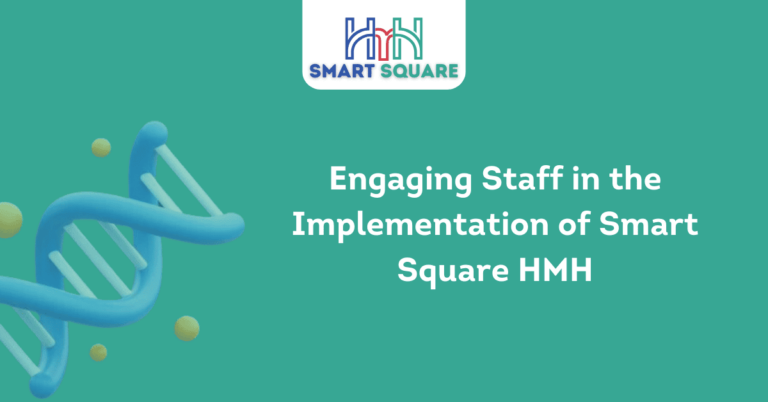Creating an Effective Rollout Timeline for Smart Square
Creating an effective rollout timeline for Smart Square HMH involves careful planning and strategic execution. It is essential to consider the specific needs and requirements of the organization to ensure a smooth and successful implementation process. By outlining key milestones and deadlines, stakeholders can stay informed and aligned throughout the rollout.
Effective communication and collaboration are crucial components of developing a successful timeline. By involving key stakeholders from the beginning stages, potential roadblocks can be identified and addressed proactively. This proactive approach can help minimize disruptions and ensure a seamless transition to Smart Square HMH for all involved parties.
Identifying Organization Needs and Requirements
Before embarking on any project, it is crucial to first identify the needs and requirements of the organization. This involves conducting thorough research and analysis to understand what the organization is looking to achieve and what resources are available to support those goals. By clearly defining these needs and requirements from the outset, the project team can ensure that the rollout timeline is aligned with the organization’s overall objectives.
Outlining Key Milestones and Deadlines
Once the organization’s needs and requirements have been identified, the next step is to outline key milestones and deadlines for the rollout timeline. This involves setting specific goals and objectives that need to be achieved at various points throughout the project. By establishing clear deadlines, the project team can stay on track and ensure that progress is being made in a timely manner.
Involving Key Stakeholders for Collaboration
Effective collaboration with key stakeholders is essential for the success of any project rollout. By involving stakeholders from the beginning, the project team can gather valuable input and feedback that can help shape the rollout timeline. By working together, stakeholders can ensure that their needs and concerns are taken into account, ultimately leading to a more successful implementation.
Addressing Potential Roadblocks Proactively
It is important to anticipate and address potential roadblocks that may arise during the rollout timeline. By proactively identifying potential challenges, the project team can develop strategies to overcome obstacles before they become major issues. This proactive approach can help minimize disruptions and keep the project on track towards successful implementation.
Minimizing Disruptions for Seamless Transition
During the rollout timeline, it is essential to minimize disruptions to daily operations to ensure a seamless transition. This involves careful planning and coordination to avoid any unnecessary downtime or interruptions. By taking steps to minimize disruptions, the project team can help ensure a smooth and successful implementation process.
Ensuring Stakeholders Stay Informed and Aligned
Keeping stakeholders informed and aligned throughout the rollout timeline is crucial for project success. Regular communication and updates can help stakeholders understand the progress being made and any changes that may impact them. By ensuring that stakeholders are informed and aligned, the project team can foster a sense of collaboration and teamwork that is essential for a successful rollout.
Communicating Effectively Throughout the Rollout
Effective communication is key to the success of any project rollout. By maintaining open lines of communication with all stakeholders, the project team can ensure that everyone is on the same page and working towards common goals. Clear and timely communication can help prevent misunderstandings and keep the project on track towards successful implementation.
Strategic Execution for Successful Implementation
Ultimately, strategic execution is essential for the successful implementation of any project rollout. By following a well-defined timeline and executing tasks efficiently, the project team can achieve their goals and deliver results that meet the organization’s needs and requirements. Strategic execution involves careful planning, coordination, and communication to ensure a successful rollout that meets or exceeds expectations.
Frequently Asked Questions
Our Frequently Asked Questions section aims to provide you with detailed information about Creating an Effective Rollout Timeline for Smart Square HMH. Read on to find answers to commonly searched queries on Google.
What is a rollout timeline?
A rollout timeline is a detailed schedule that outlines the tasks, milestones, and deadlines for implementing a new product or system, such as Smart Square HMH. It helps in organizing and tracking the progress of the rollout process.
Why is creating an effective rollout timeline important?
Creating an effective rollout timeline is crucial for ensuring a smooth and successful implementation of Smart Square HMH. It helps in coordinating various tasks, allocating resources efficiently, setting realistic goals, and managing risks effectively.
How can I create a well-planned rollout timeline for Smart Square HMH?
To create a well-planned rollout timeline for Smart Square HMH, start by defining clear objectives, identifying key stakeholders, breaking down tasks into manageable steps, setting realistic deadlines, allocating resources effectively, and regularly monitoring and adjusting the timeline as needed.
Challenges in Creating a Rollout Timeline for Smart Square HMH
Some common challenges faced when creating a rollout timeline for Smart Square HMH include inadequate resources, lack of stakeholder alignment, scope creep, unexpected delays, communication gaps, and resistance to change. It’s essential to address these challenges proactively to ensure a successful rollout.
Creating a Realistic and Achievable Rollout Timeline for Smart Square HMH
To ensure that your rollout timeline for Smart Square HMH is realistic and achievable, involve key stakeholders in the planning process, conduct a thorough risk assessment, set clear and achievable milestones, allocate resources effectively, build in buffer time for unexpected delays, and continuously communicate and collaborate with the project team.
What are some best practices for managing a rollout timeline for Smart Square HMH?
Some best practices for managing a rollout timeline for Smart Square HMH include regular communication with stakeholders, monitoring progress against milestones, identifying and addressing potential risks proactively, maintaining flexibility to accommodate changes, celebrating small victories along the way, and conducting post-rollout evaluations to learn from the experience and improve future timelines.







